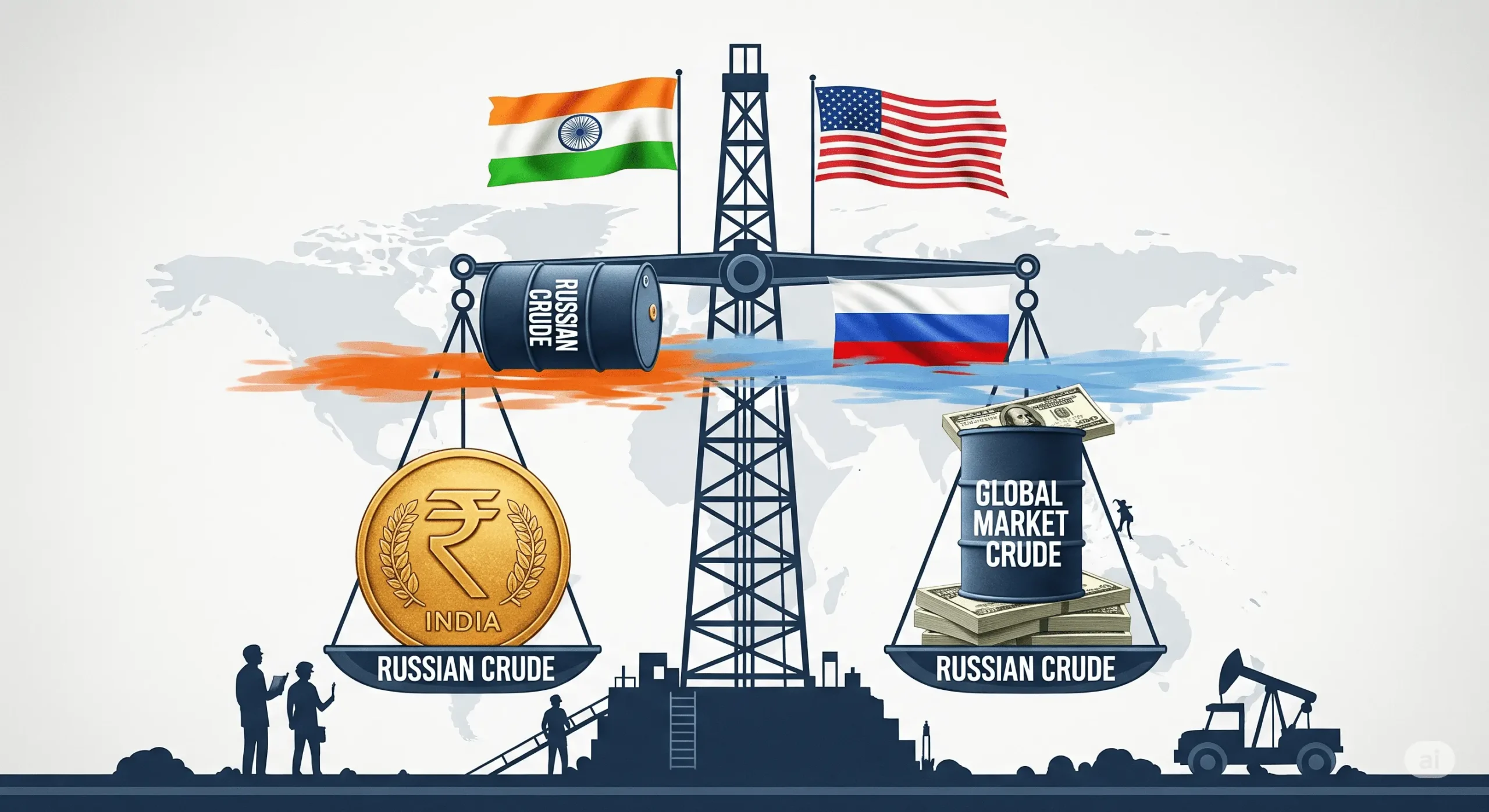NEW YORK – Global energy markets are on high alert as new pressure from the U.S. government could force India, the world’s third-largest oil consumer, to halt its significant imports of discounted Russian crude. Analysts are warning that such a move could trigger a dramatic surge in crude oil prices, potentially impacting consumers and economies worldwide.
For years, India has been a key buyer of Russian oil, leveraging substantial discounts that emerged after Western sanctions on Moscow. This relationship has allowed India to stabilize its domestic fuel prices and manage inflation. Russian oil now accounts for over a third of India’s total crude imports, a massive increase from pre-conflict levels.
However, a recent move by the U.S. administration to impose new tariffs and “penalties” on Indian exports, specifically citing New Delhi’s trade ties with Russia, has put this arrangement at risk. While some Indian state-run refiners have reportedly paused new spot market purchases of Russian oil, private companies with long-term contracts are continuing to buy.
The Domino Effect on Global Prices
The potential for India to completely pivot away from Russian oil has sent shockwaves through the market. Here’s why the impact could be so severe:
- Massive Supply Disruption: India’s current imports of Russian crude amount to millions of barrels per day. If this supply is suddenly removed from the market, it would create a significant global deficit that cannot be easily filled.
- Alternative Source Scramble: India would have to turn to other major producers, primarily in the Middle East, to meet its energy needs. This would increase demand for non-Russian crude, pushing up prices for everyone.
- Forecasting a Price Surge: Energy analysts are projecting a worst-case scenario where global crude prices could skyrocket. Some estimates suggest that if India fully exits the Russian market, crude prices could jump to as high as $200 per barrel, a level not seen in years. Even more conservative forecasts predict Brent crude could climb to the $80-$100 range by the end of the year.
What This Means for the U.S. Consumer
A sharp increase in global crude prices would inevitably lead to higher gasoline prices at the pump for Americans. The U.S., while a major oil producer, is still heavily influenced by the global market. A price spike would contribute to inflationary pressures, affecting everything from transportation costs to the prices of goods and services.
This geopolitical standoff highlights a complex challenge for the U.S. administration: how to exert pressure on a strategic partner like India without causing significant negative consequences for the global economy and American consumers. As the situation evolves, the decisions made in New Delhi and Washington will have a direct and tangible impact on households and businesses across the U.S.







